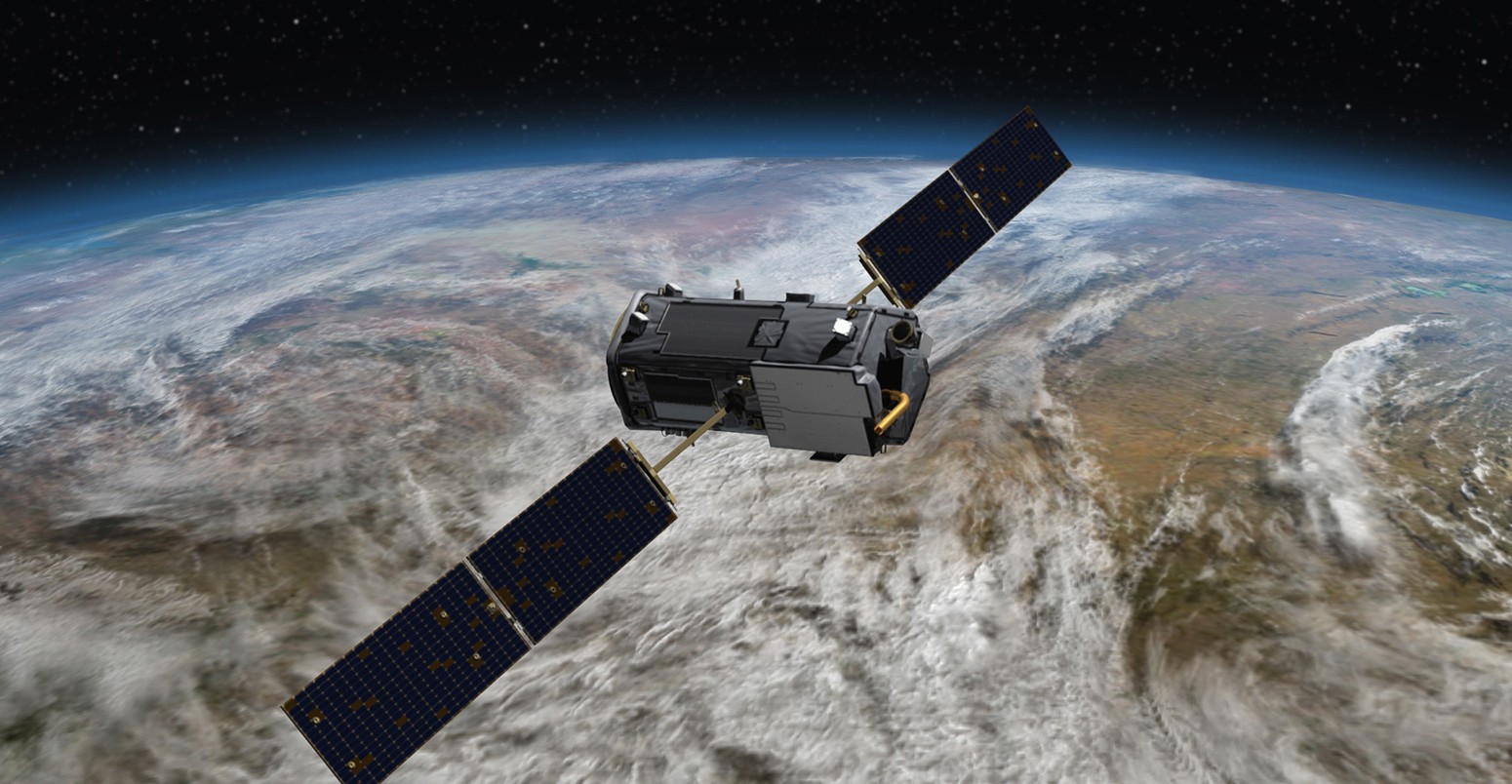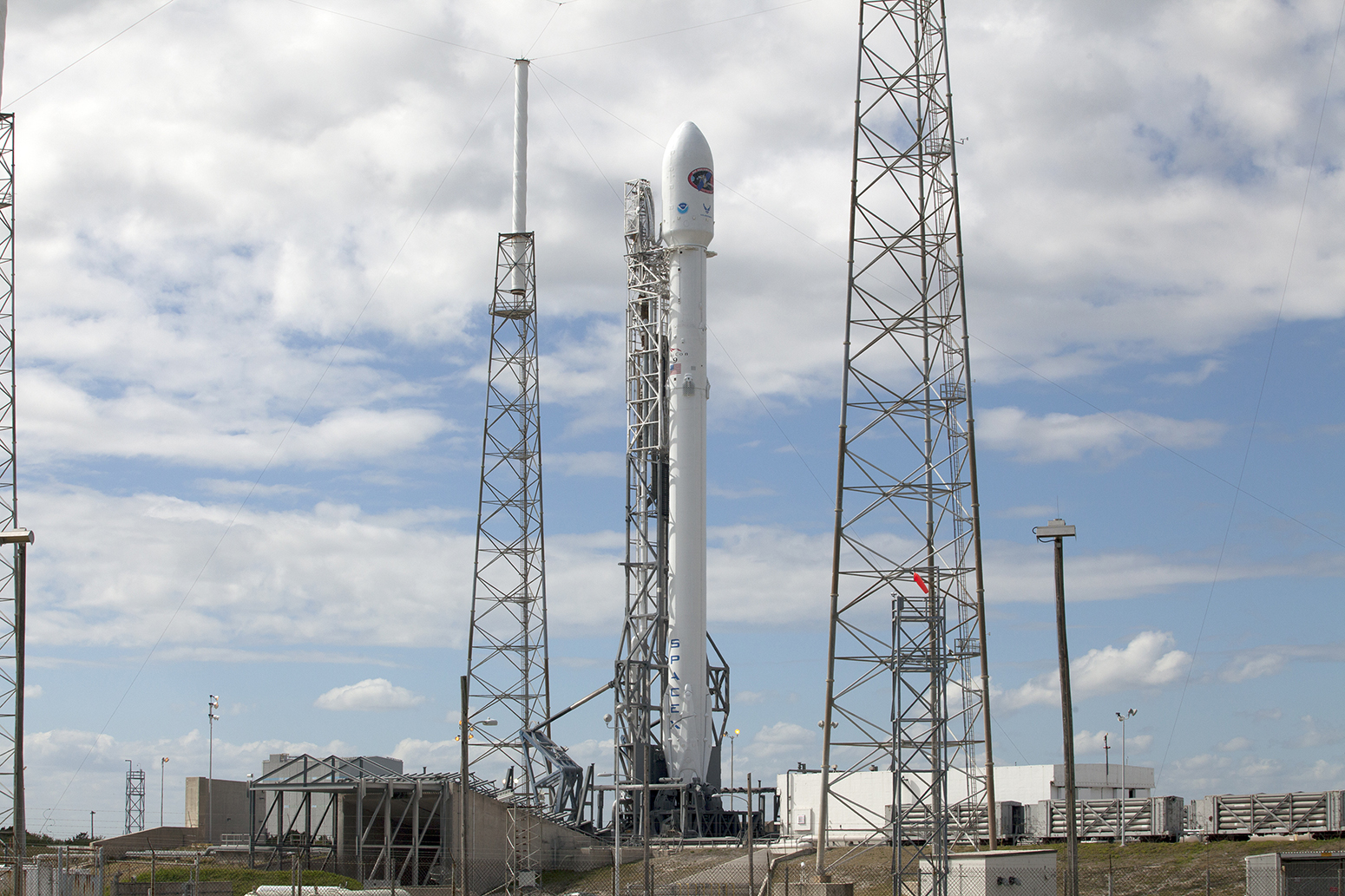
In-depth: What Donald Trump’s budget means for US spending on climate change
Roz Pidcock
03.17.17Roz Pidcock
17.03.2017 | 7:46amUpdate 23 May: On Tuesday, President Trump released a fleshed-out version of the March “skinny budget” with further details about his administration’s priorities for reorganising federal spending.
Some things remain unchanged. The proposed cut to the Environmental Protection Agency (EPA) of 31% still stands, as does the intention to cease payments to the Green Climate Fund (GCF). But NASA’s earth sciences programme appears to take a bigger financial hit in the new budget.
A Major Saving and Reforms document accompanying the main budget confirms Trump’s wish to scrap four NASA earth science missions (DSCOVR, OCO-3, PACE and CLARREO Pathfinder, see below). But now a fifth NASA mission joins the list of projects earmarked for scrapping.
Under the new proposals, funding for a future weather satellite capable of measuring the influence of clouds on Earth’s climate – known as the Radiation Budget Instrument (RDI) – would also be terminated. Citing “competing priorities”, the administration categorises all five projects as “lower-priority science missions that cannot be accommodated under constrained budgets”.
NASA’s acting administrator Robert Lightfoot said in a statement that despite the proposed ending of five programmes, the proposed budget “still includes significant Earth Science efforts, including 18 Earth observing missions in space as well as airborne missions”.
The new budget also retains the proposal to terminate NASA’s Office of Education, citing “challenges in providing oversight and integration of Agency-wide education activities”.
——————————————————-
On Thursday, President Trump unveiled his first budget proposal. Entitled “America First: A budget blueprint to make America Great Again”, the document outlines how the new administration plans to “reprioritise Federal spending”, redirecting funding away from a suite of government agencies in favour of increases in defence and immigration enforcement spending.
A statement by President Trump insists the proposed cuts are “sensible and rational”, adding:
“Every agency and department will be driven to achieve greater efficiency and to eliminate wasteful spending in carrying out their honorable service to the American people.”
It’s worth noting that the document is only a “blueprint”, laying out the president’s priorities for the 2018 fiscal year. The full federal budget will be released later this Spring and must first pass through Congress for approval. In the meantime, it’s worth looking at which research programmes the new administration has in its sights and the consequences of the proposed cuts for climate science.
Four ‘Earth-viewing’ programmes scrapped at NASA
The president’s proposed budget allocates $19.1bn for the US National Aeronautics and Space Administration (NASA), representing a 0.8% cut from current levels.
In a statement on Thursday, NASA’s acting administrator Robert Lightfoot called this a “positive budget overall for NASA” that was “in line with our funding in recent years” and which is sufficient to enable NASA to “effectively execute our core mission for the nation”.
However, keeping an overall headline figure belies major changes to the agency’s priorities.
The budget proposes cutting NASA’s Earth science budget by $102m to $1.8bn, with four Earth science missions scrapped completely; DSCOVR, OCO-3, PACE and CLARREO Pathfinder.

The SpaceX Falcon 9 rocket set to launch NOAA’s Deep Space Climate Observatory spacecraft, or DSCOVR, awaits liftoff, 8 February 2015. Credit: NASA/Kim Shiflett.
The Deep Space Climate Observatory (DSCOVR) is an active satellite, launched in 2015 as a joint project between NASA, NOAA and the US Air Force. It collects data on Earth’s atmosphere to generate space weather alerts and forecasts. More relevant to climate science, DSCOVR carries two Earth-observing instruments. It’s for these that the budget proposes to terminate funding.
The Earth Polychromatic Imaging Camera (EPIC) captures the motion of clouds and aerosols. In the video below, you can see EPIC’s lead scientist, Jay Herman, explaining why this is important for studying climate change. He says:
“Around two-thirds of the Earth is covered by clouds…Changes in cloud cover affect the heat balance and how warm the Earth becomes.”
The DSCOVR satellite also houses the National Institute of Standards and Technology Advanced Radiometer (NISTAR) instrument, which measures the reflectivity – or albedo – of Earth. As DSCOVR’s programme manager, Michael Simpson, describes it:
“Also looking back at Earth is the National Institute of Standards & Technology’s Advanced Radiometer. It studies Earth’s radiation budget, how much radiation is reflected back off the Earth. That is a key component to a lot of climate studies.”
The second NASA programme potentially facing the scrap heap under the proposed budget is the Orbiting Carbon Observatory 3 (OCO-3) This is the successor to OCO-2, an instrument that is currently circling Earth’s poles, making very precise measurements of atmospheric CO2.
Carbon Brief spoke to the NASA scientists in charge of OCO-2 recently about their “eye popping” 3-D visualisation of the first full year of data. Dr Lesley Ott, a carbon cycle scientist at Goddard’s Global Modeling and Assimilation Office, explained why the mission is important:
“The main goal of OCO-2 and most carbon cycle modelling is to better understand the processes that control carbon sources and sinks…from there we can improve climate models to better predict changes in the natural carbon cycle.”
The third NASA programme potentially in the firing line for funding cuts is the Plankton, Aerosol, Cloud, ocean Ecosystem (PACE) mission. Planned for launch in 2022-2023, the mission will provide information on aerosol and clouds, as well as monitoring ocean biodiversity.
Finally, funding may also be pulled for the preliminary stage of the Climate Absolute Radiance and Refractivity Observatory (CLARREO) programme. Hosted on the International Space Station, the CLARREO Pathfinder mission is intended to test techniques used to monitor and attribute climate change. A 2013 paper by some of the developers describing the purpose of the full-scale project says:
“With its unprecedented accuracy, [CLARREO] shortens the time to detect the magnitude of climate change at the high confidence level that decision makers need.”
With the planned launch for CLARREO already pushed back from the original date of 2018-20, the paper aptly notes:
“While this is unfortunate, space missions are often delayed because of cost overruns of earlier missions or changes in NASA budget plans.”
The new budget blueprint also says it will “eliminate” NASA’s $115m Office of Education and reduce – but not terminate – funding for NASA’s Earth science research grants. No further details are given on these points, other than to say the Office for Education has “experienced significant challenges” and is “duplicative of other parts of the agency”.
Trump also "terminating" funding for four NASA Earth science missions – PACE, OCO-3, DSCOVR & CLARREO https://t.co/gXo02CNdyP pic.twitter.com/M5wj1gEFEw
— Leo Hickman (@LeoHickman) March 16, 2017
NOAA faces cuts to future satellite programme
Overall, the proposed budget would reduce the budget for the Department of Commerce – the bureau that houses the National Oceanic and Atmospheric Administration (NOAA) – by 16%.
The new administration would, however, “maintain development” of NOAA’s Joint Polar Satellite System (JPSS). These are polar-orbiting satellites that provide continuous observations of Earth’s oceans, clouds, ozone, snow, ice, vegetation and atmosphere.
As an FAQ on the JPSS website explains:
“Without NOAA’s JPSS satellites on-orbit, the lost data would lead to less accurate and timely NOAA’s National Weather Service numerical weather prediction models that are needed to support weather forecasting.”
But while the three JPSS satellites that make up the “current generation” are seemingly safe, the proposed budget cuts funding to the “Polar Follow On” satellite project. This part of the programme, approved in the appropriations bill for fiscal year of 2016, allows for two further satellites to provide polar coverage through the 2030s. The proposed budget suggests the savings will be achieved by “better reflecting the actual risk of a gap in polar satellite coverage”.
There is no specific mention in the proposed budget of NOAA’s Oceanic and Atmospheric Research (OAR) programme, which last week was reportedly facing a cut of 26%. Prof Kevin Trenbeth, a senior scientist at the US National Center for Atmospheric Research, told Carbon Brief last week that he was concerned about what this could mean for ocean observations, since the money for the global ARGO network of ocean-monitoring buoys comes out of that budget. He said:
“If NOAA cuts back so do others – and it all goes downhill…ARGO is still a research enterprise, not an operational one. It is vulnerable. Such a cutback would be a travesty.”
The new president’s proposed budget also “zeroes out” over $250m in NOAA grants and programs that support “coastal and marine management, research, and education”, deeming them lower priority than other “core functions” that the budget maintains, such as “surveys, charting, and fisheries management”.
EPA cuts, payments to UN programmes stop
As part of an overall 28% cut to the State Department and USAID funding, the budget blueprint says it intends to “eliminate” the Global Climate Change Initiative, an Obama-era programme to integrate climate change considerations into US foreign assistance.
The new administration also proposes to cease payments to the United Nations Green Climate Fund, which supports low-carbon projects in developing countries, and to reduce funding for development banks, such as the World Bank, by approximately $650m over three years.
The Environmental Protection Agency (EPA) is one of the biggest losers from the proposed budget, in line for a cut of $2.6bn, or 31% from current funding levels.
As rumoured, the new administration proposes discontinuing funding for the Clean Power Plan, as well as “international climate change programs, climate change research and partnership programs, and related efforts”. Energy Star – an initiative to promote energy efficiency – is one of more than 50 “lower priority and poorly performing” programmes also facing the chop.
What happens now?
The proposed budget will be submitted to Congress as a series of “annual appropriations bills”, explains BBC News. With each needing 60 votes in the Senate to succeed, the piece reads:
“At least eight Democrats would have to vote for the cuts or at least refuse to obstruct it. Given the level of Democratic animosity towards Mr Trump, those possibilities look slim.”
It’s a long road and much of the impact of budgetary changes on climate research remains to be seen. But the new blueprint is valuable in outlining the new administration’s priorities.
-
In-depth: What Donald Trump's budget means for US spending on climate change

